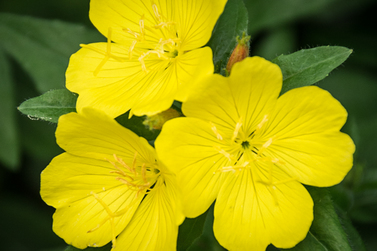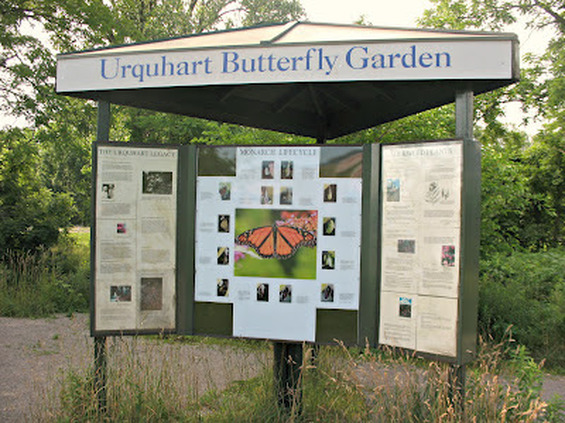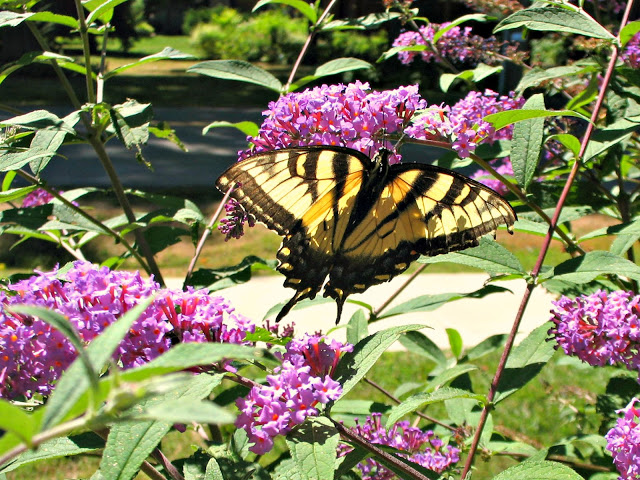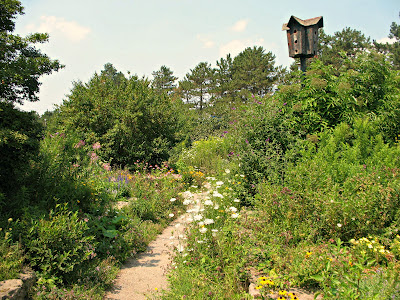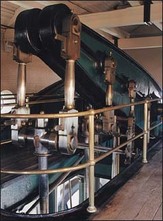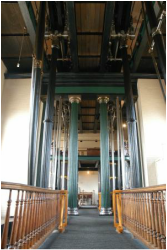Summer Lectures Club
|
Thank you to the members who attended one or more of our meetings so far this summer. You have helped to make Summer Lectures Club a great success. Please make a note of the remaining lectures and events for this season.
Urquhart Outdoor Butterfly Garden, Dundas, Ontario
Aug 18
(the last event of our summer program)
|
Urquhart Outdoor Butterfly Garden was named in honour of Frederick and Norah Urquhart, discoverers of the migration routes of the monarch butterfly. Pollinator garden tour under the auspices of the butterfly garden’s founder and mentor, Joanna Chapman
Date: Thursday August 18th Time and meeting place: meet for car-pooling at 9 am.: Freshco Shopping Centre Parking Lot, corner Stevenson Street North and Speedvale Avenue
|
About Frederick and Norah Urquhart
In 1937, as a post-graduate Toronto University zoology student, Frederick Urquhart first attempted to unravel the mystery of the over-wintering habits of the monarch butterfly, Danaus plexippus L. In July 1945 he married Norah Patterson and together the Urquharts continued a 38-year quest that consumed the greater part of their academic and professional careers.
Fred and Norah tracked the butterflies by tagging the wings of thousands of individual butterflies. They founded the first Insect Migration Association, today known as Monarch Watch, and recruited hundreds of volunteers — "citizen scientists" who helped in their research by tagging butterflies and reporting findings and sightings. The Urquharts identified several distinct migration routes, but were baffled when the trail seemed to disappear in Texas in the late fall, only to reappear in the spring. They sought help in Mexico and recruited a pair of amateur naturalists to search for the butterflies. On January 9, 1975, naturalist Kenneth Brugger and his wife Catalina Trail finally located the first known wintering refuge of the butterflies on a mountaintop in Michoacán, Mexico, more than 4,000 kilometers from the starting point of their migration. They called the Urquharts with the exciting news “we have found them—millions of monarchs!.” Early in 1976, Fred and Norah Urquhart, then in their sixties, climbed the “Mountain of Butterflies” about 240 miles from Mexico City, in the Neovolcanic Plateau and among the millions of butterflies wintering there, found one bearing a white tag that had been placed on the butterfly in Minnesota.
To read a beautifully written description of their trip by Fred Urquhart, google National Geographic August 1976.
In 1937, as a post-graduate Toronto University zoology student, Frederick Urquhart first attempted to unravel the mystery of the over-wintering habits of the monarch butterfly, Danaus plexippus L. In July 1945 he married Norah Patterson and together the Urquharts continued a 38-year quest that consumed the greater part of their academic and professional careers.
Fred and Norah tracked the butterflies by tagging the wings of thousands of individual butterflies. They founded the first Insect Migration Association, today known as Monarch Watch, and recruited hundreds of volunteers — "citizen scientists" who helped in their research by tagging butterflies and reporting findings and sightings. The Urquharts identified several distinct migration routes, but were baffled when the trail seemed to disappear in Texas in the late fall, only to reappear in the spring. They sought help in Mexico and recruited a pair of amateur naturalists to search for the butterflies. On January 9, 1975, naturalist Kenneth Brugger and his wife Catalina Trail finally located the first known wintering refuge of the butterflies on a mountaintop in Michoacán, Mexico, more than 4,000 kilometers from the starting point of their migration. They called the Urquharts with the exciting news “we have found them—millions of monarchs!.” Early in 1976, Fred and Norah Urquhart, then in their sixties, climbed the “Mountain of Butterflies” about 240 miles from Mexico City, in the Neovolcanic Plateau and among the millions of butterflies wintering there, found one bearing a white tag that had been placed on the butterfly in Minnesota.
To read a beautifully written description of their trip by Fred Urquhart, google National Geographic August 1976.
The Pump House Museum, Woodward Avenue, Hamilton - guided by the museum curator
|
Housed in 150-year-old waterworks, this National Historic Site preserves two 70-ton steam engines, perhaps the oldest surviving Canadian-built engines. The historic Hamilton Waterworks is a Civil and Power Engineering Landmark.
In the mid-nineteenth century, the growing town of Hamilton was beset by health and fire hazards caused by a serious lack of potable water. The absence of a waterborne sewage disposal system led to outbreaks of typhoid, cholera and other diseases through unhealthy living conditions. In a town built largely of wood, accidental fires could consume whole blocks of buildings with devastating results. In 1856, with a population of little more than 15,000, the town commissioned the building of two gigantic steam-driven pumps, together with a reservoir half way up “Hamilton Mountain” to store water from Lake Ontario, water that could be gravity-fed into the town to supply the inhabitants with a reliable source of clean water. The huge steam engines operated until 1910 and thanks to the enthusiastic support of a group of local engineers are now renovated and in (almost) working condition. Tour completed approximately 3.00pm and departure for Guelph |
You are receiving this newsletter because of your expressed interest in the Summer Lectures Club. If for any reason you would prefer not to receive news from us, please just send an e-mail and we’ll remove your name.
